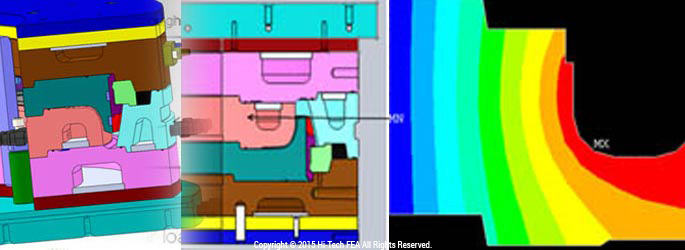Different Types of Thermal Analysis
Posted by Bhaumik Dave on July 11th, 2013
Thermal analysis is the extent of speculation about how thermal performance of a design gets changed with temperature. Basically there are three mode of heat transfer which thermal analysis covers to study the effect over a particular body- Conduction, Convection and Radiation.

Let us look at each of these three modes in detail:
- Conduction: In heat transfer, conduction (or heat conduction) is the transfer of heat energy by microscopic diffusion and collisions of particles or quasi-particles within a body due to a temperature gradient.
- Convection Convective heat transfer is a mechanism of heat transfer occurring because of bulk motion (observable movement) of fluids. Heat is the entity of interest being carried and diffused (dispersed). In case of FEA, film coefficients are defined and loads are applied by heat generation and bulk temperature to calculate the Heat Transfer.
- Radiation Heat transfer through radiation takes place in the form of electromagnetic waves mainly in the infrared region. Radiation emitted by a body is a consequence of thermal agitation of its composing molecules.
According to the types of FEA Methods, Thermal Analysis may be divided into two categories: Steady State Thermal Analysis and Transient Thermal Analysis.
Let us look at both these categories in details:
- Steady State Thermal Analysis: While doing a steady state analysis, it is assumed that the system has reached to steady state i.e. not variant with respect to time
- Transient Thermal Analysis: While doing a transient analysis, we study the time dependent behavior of temperatures on a particular geometry.
Thermal analysis is frequently used in industrial processes as an authentic and optimization of solidification process, as well as a reliable method for the observation, speculation, and measurement of heat transfer process through stipulated structures. Many of the basic engineering data for modeling comes from measurement of heat capacity and thermal conductivity.


